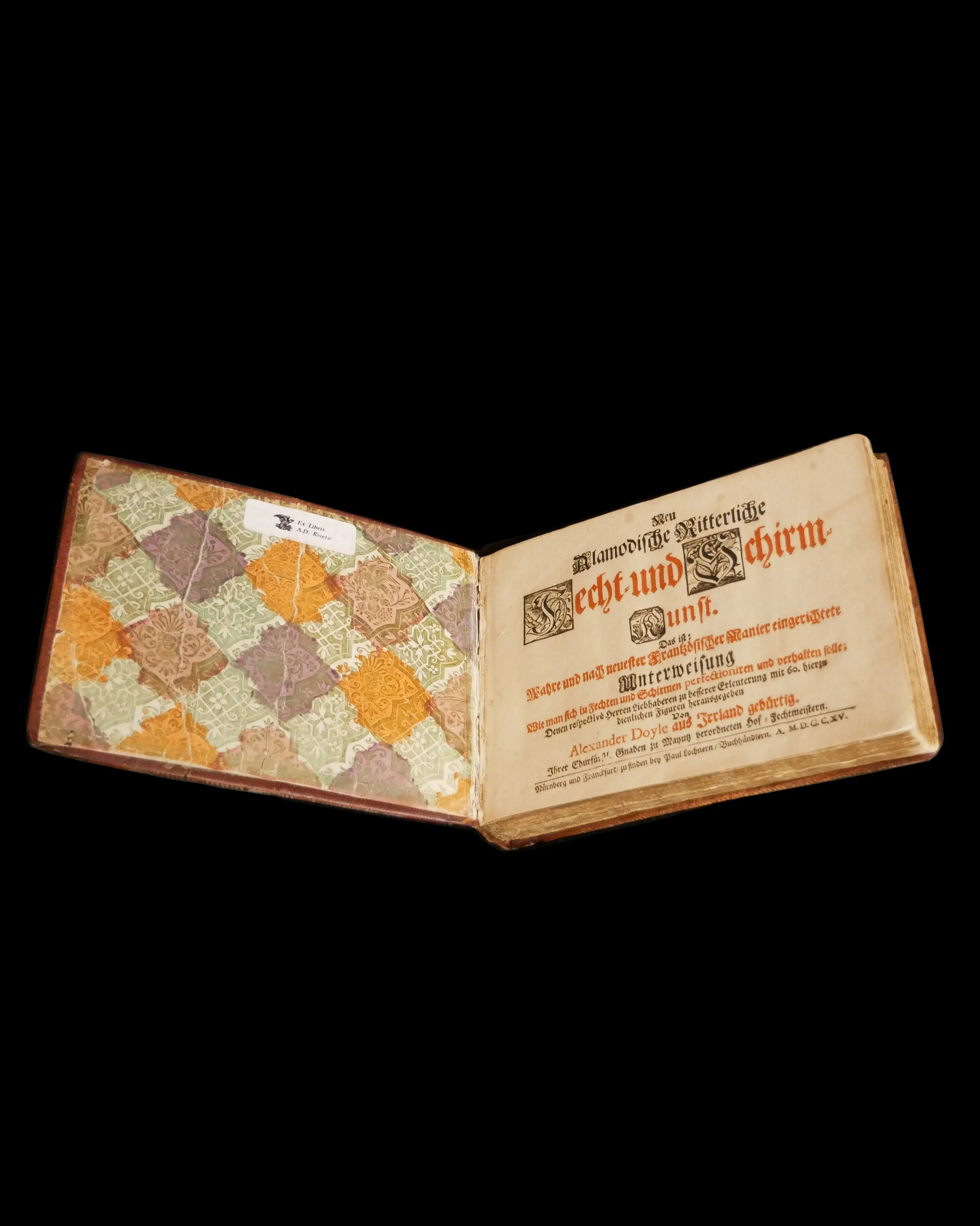 Image 1 of 17
Image 1 of 17

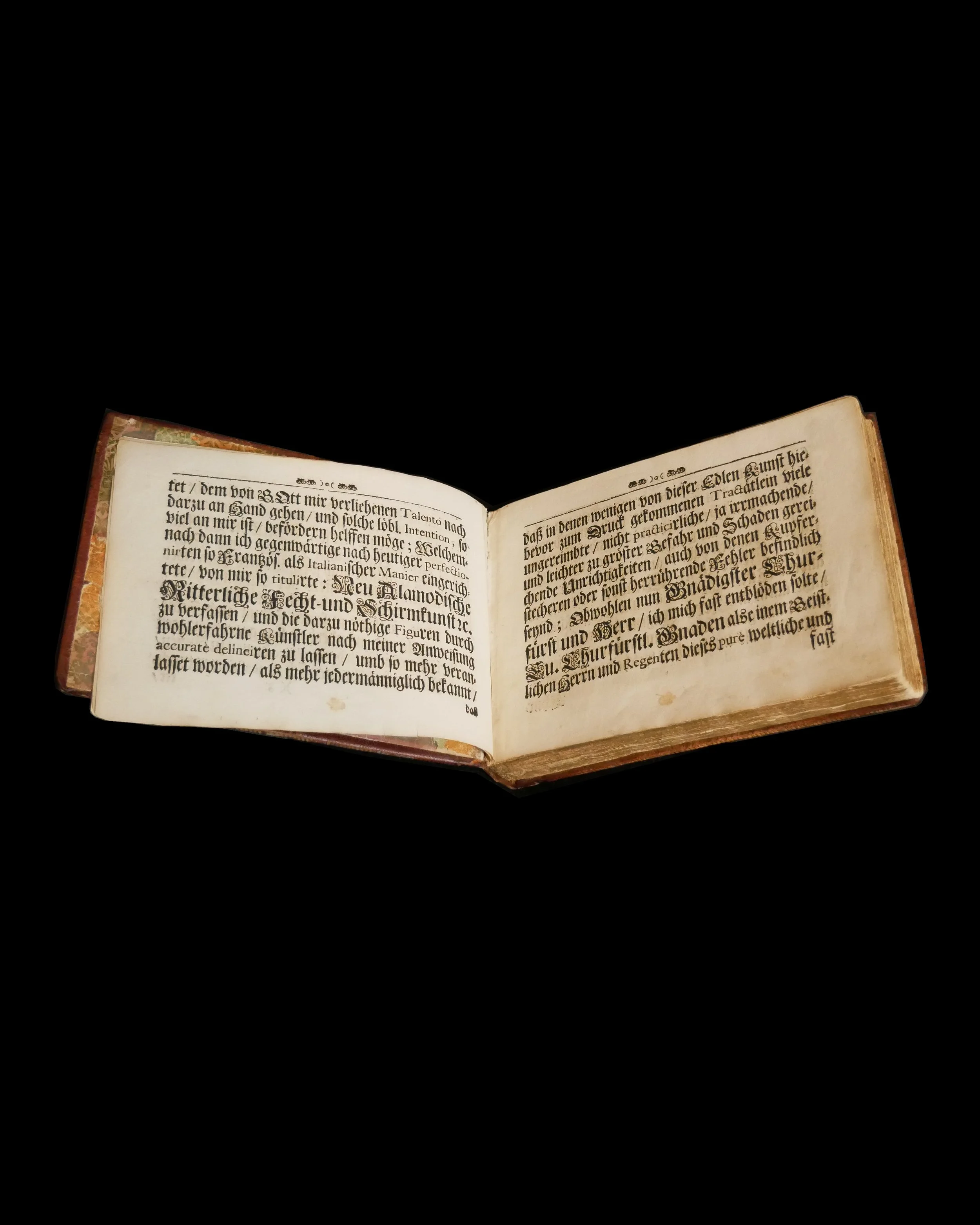 Image 2 of 17
Image 2 of 17

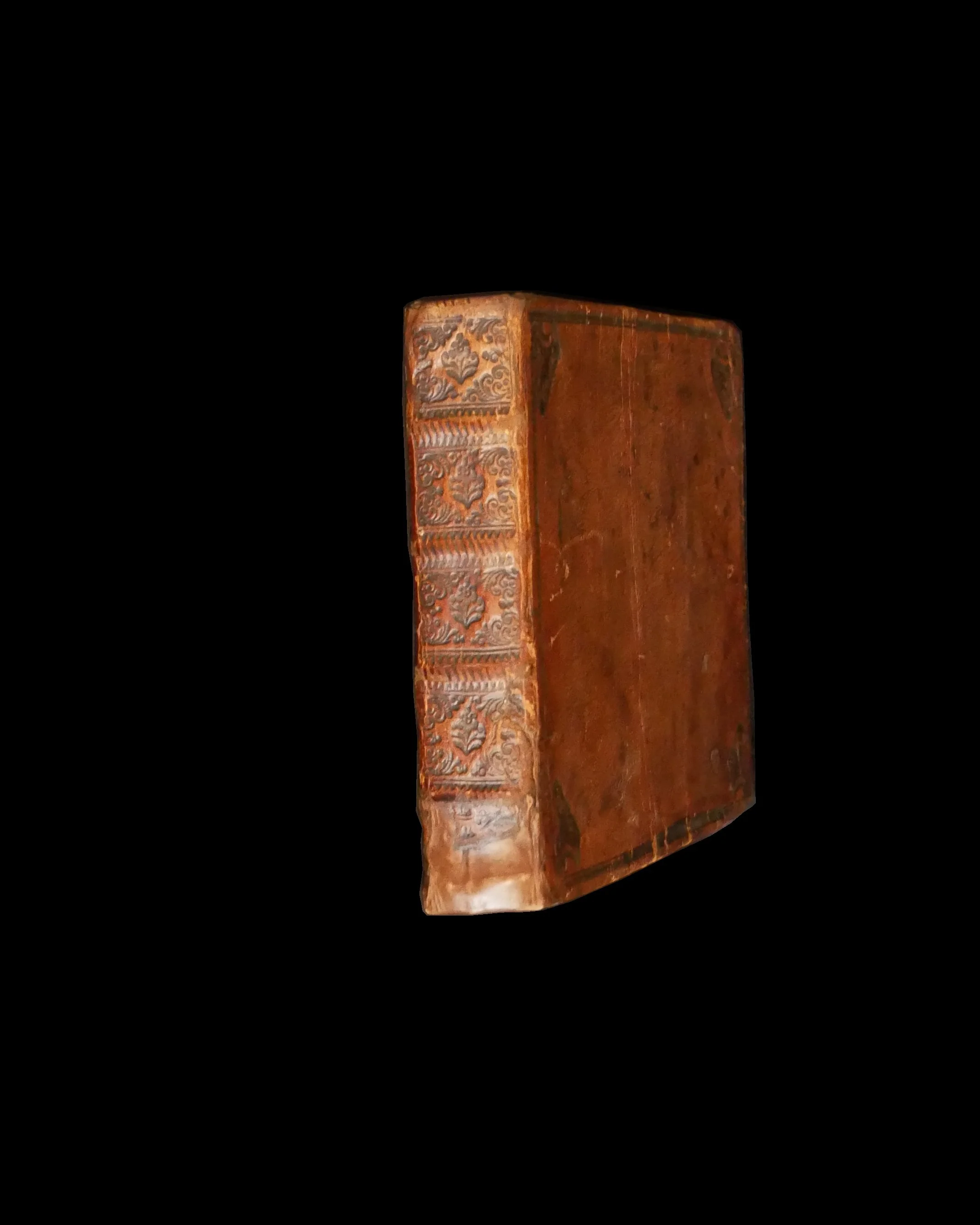 Image 3 of 17
Image 3 of 17

 Image 4 of 17
Image 4 of 17

 Image 5 of 17
Image 5 of 17

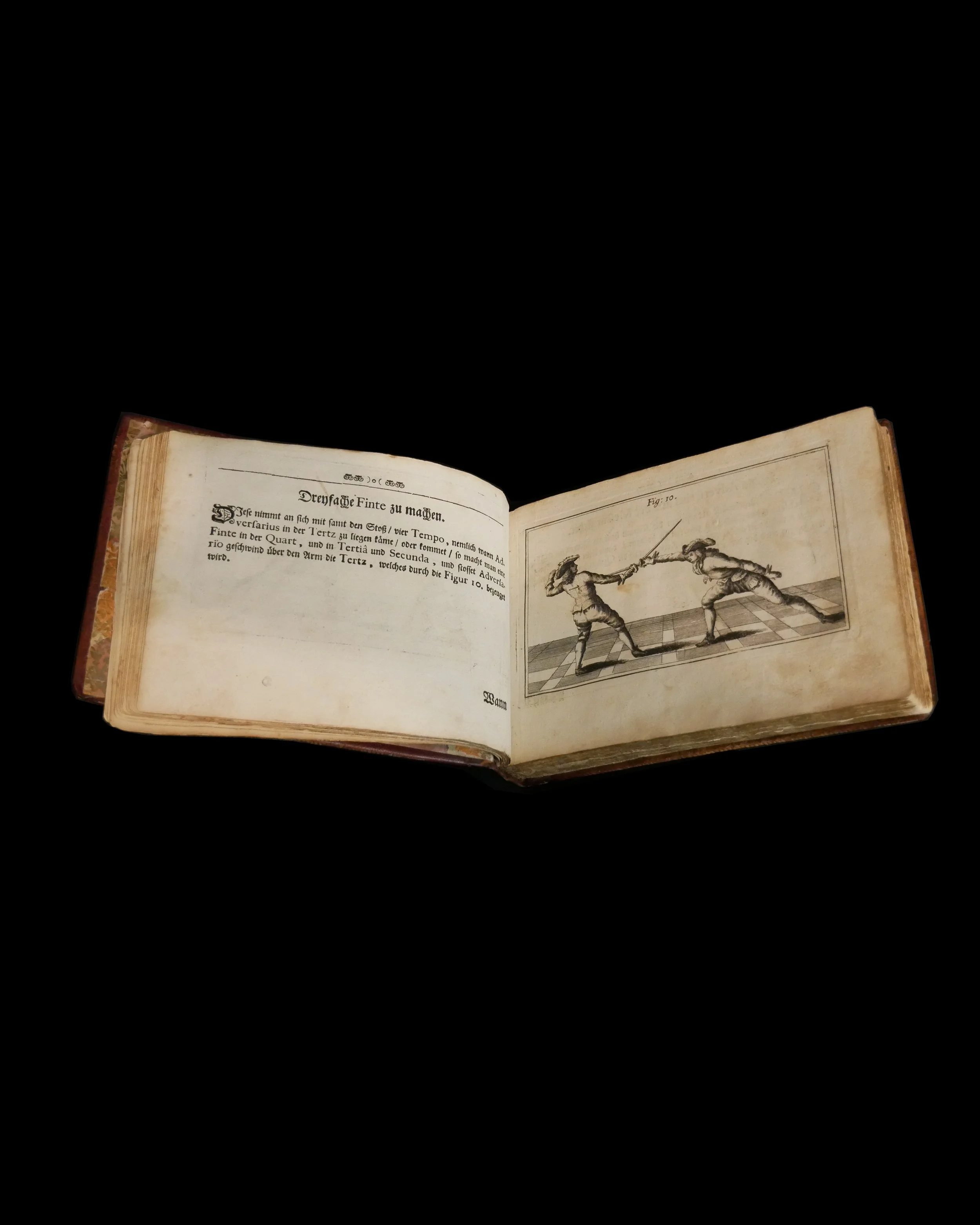 Image 6 of 17
Image 6 of 17

 Image 7 of 17
Image 7 of 17

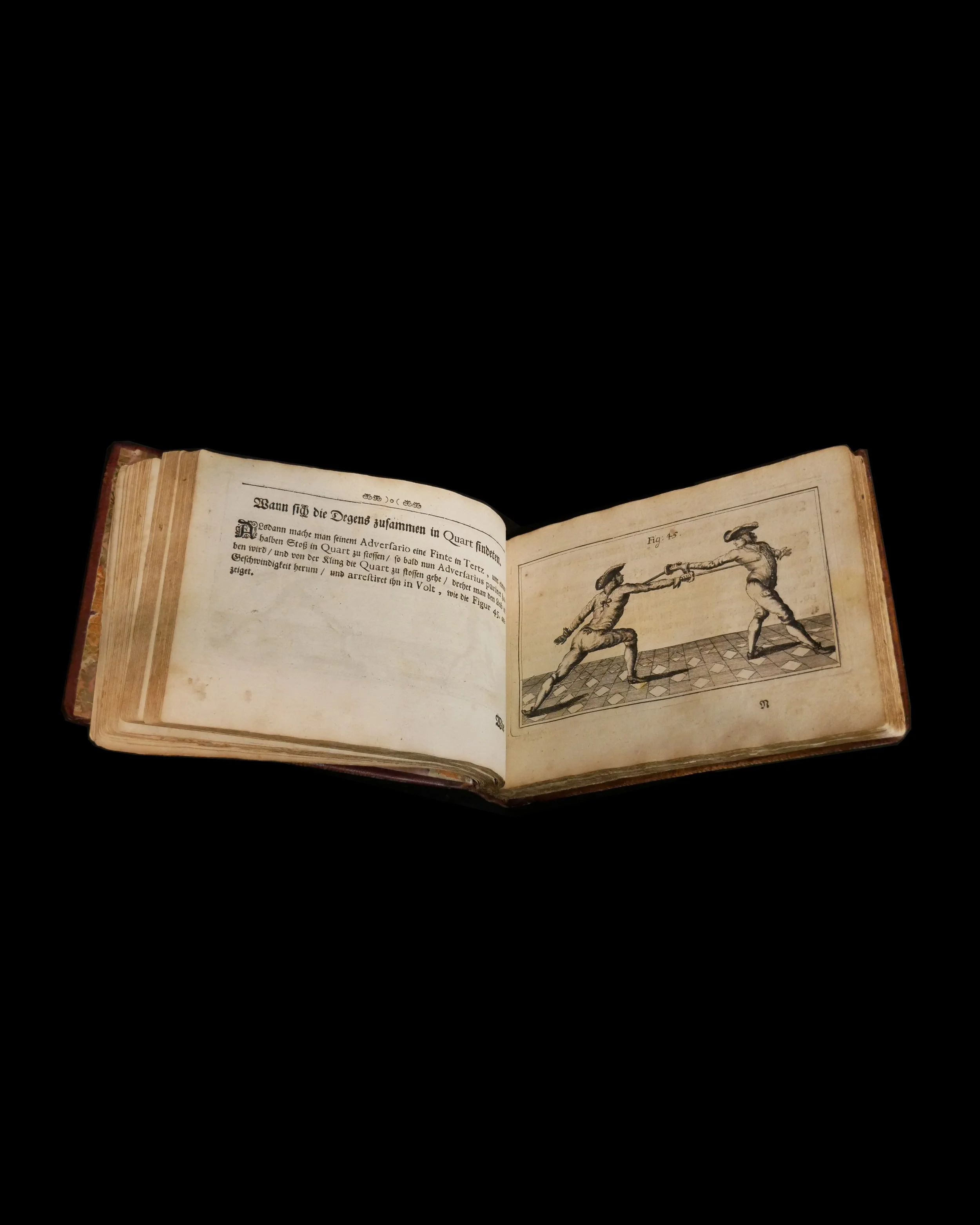 Image 8 of 17
Image 8 of 17

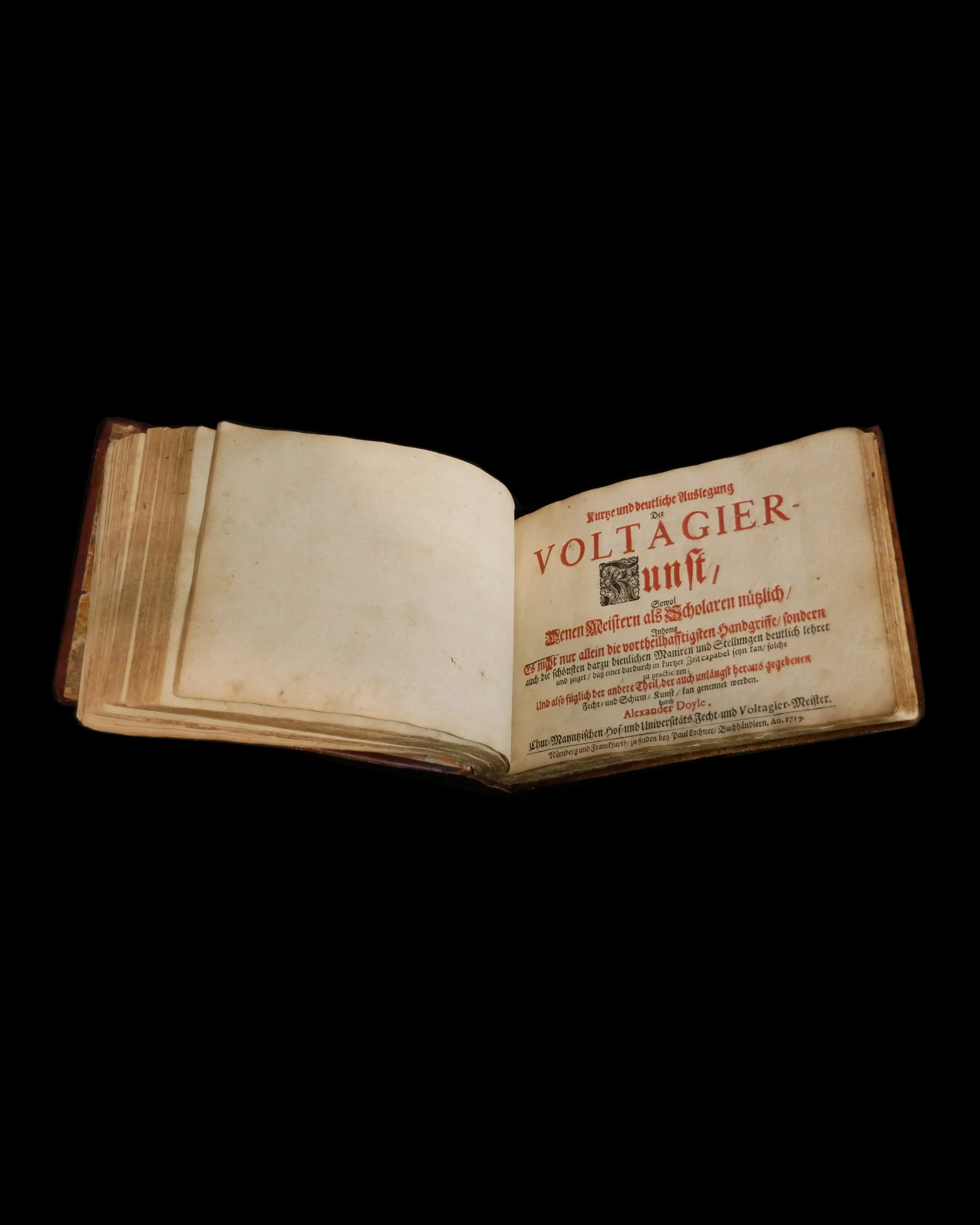 Image 9 of 17
Image 9 of 17

 Image 10 of 17
Image 10 of 17

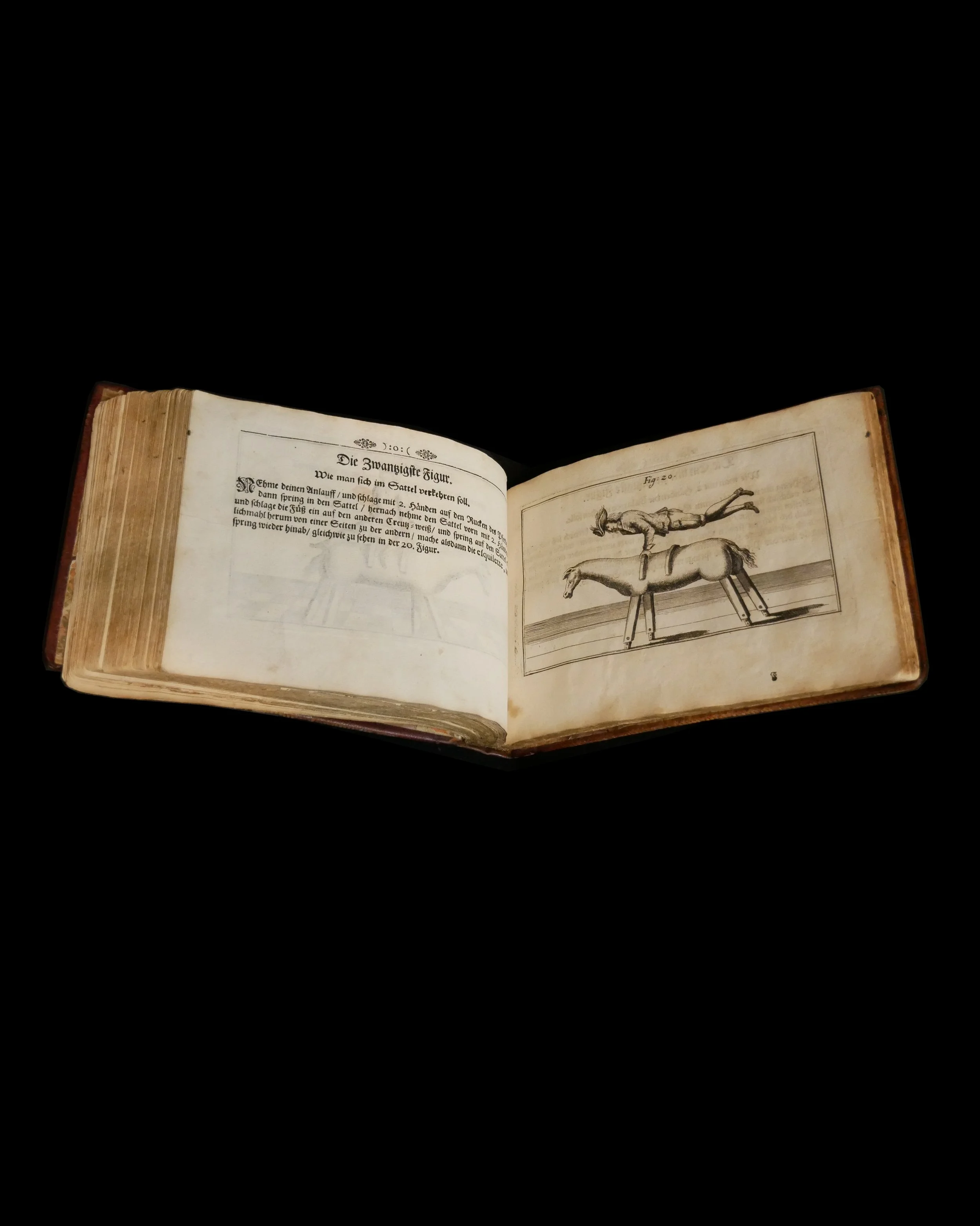 Image 11 of 17
Image 11 of 17

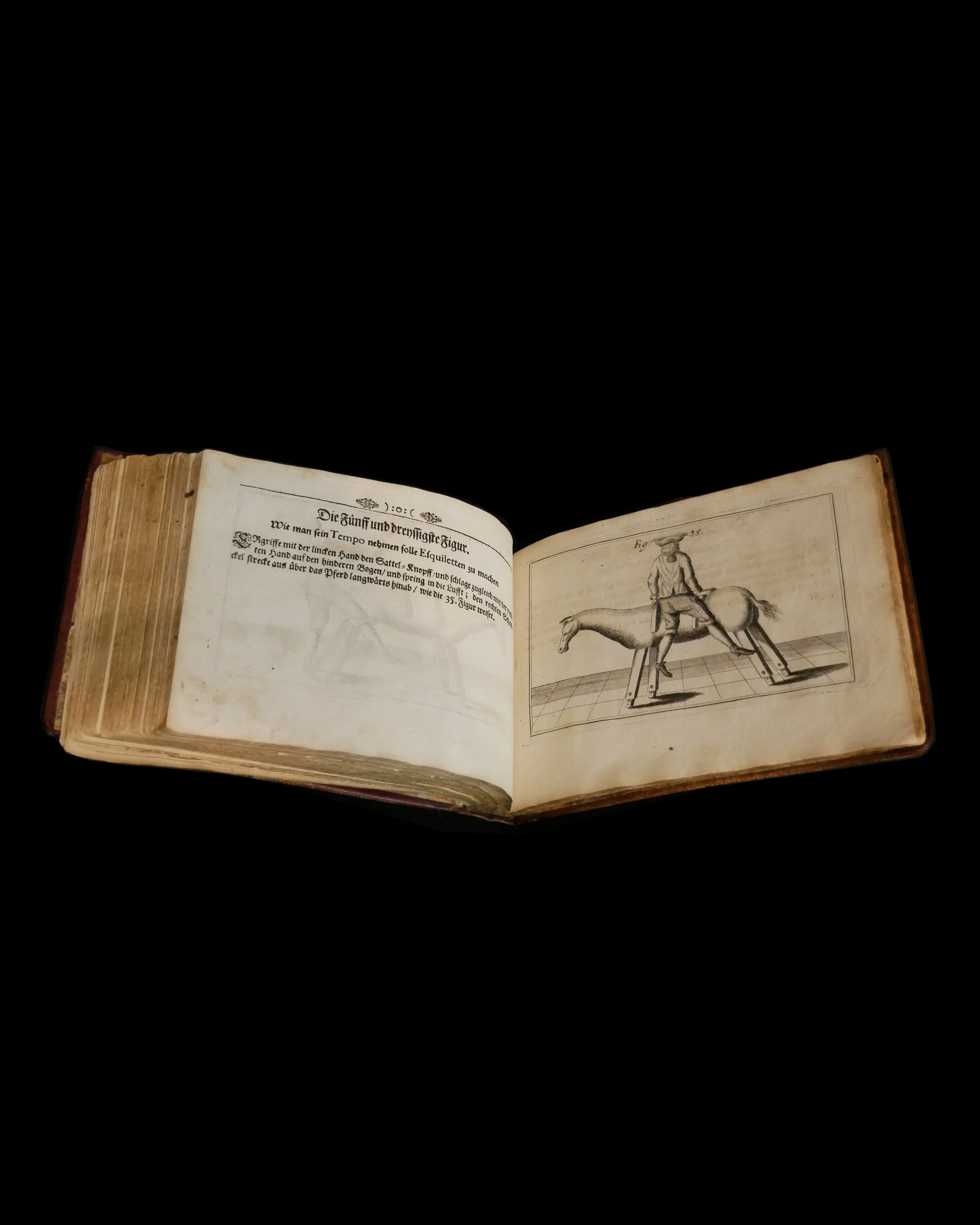 Image 12 of 17
Image 12 of 17

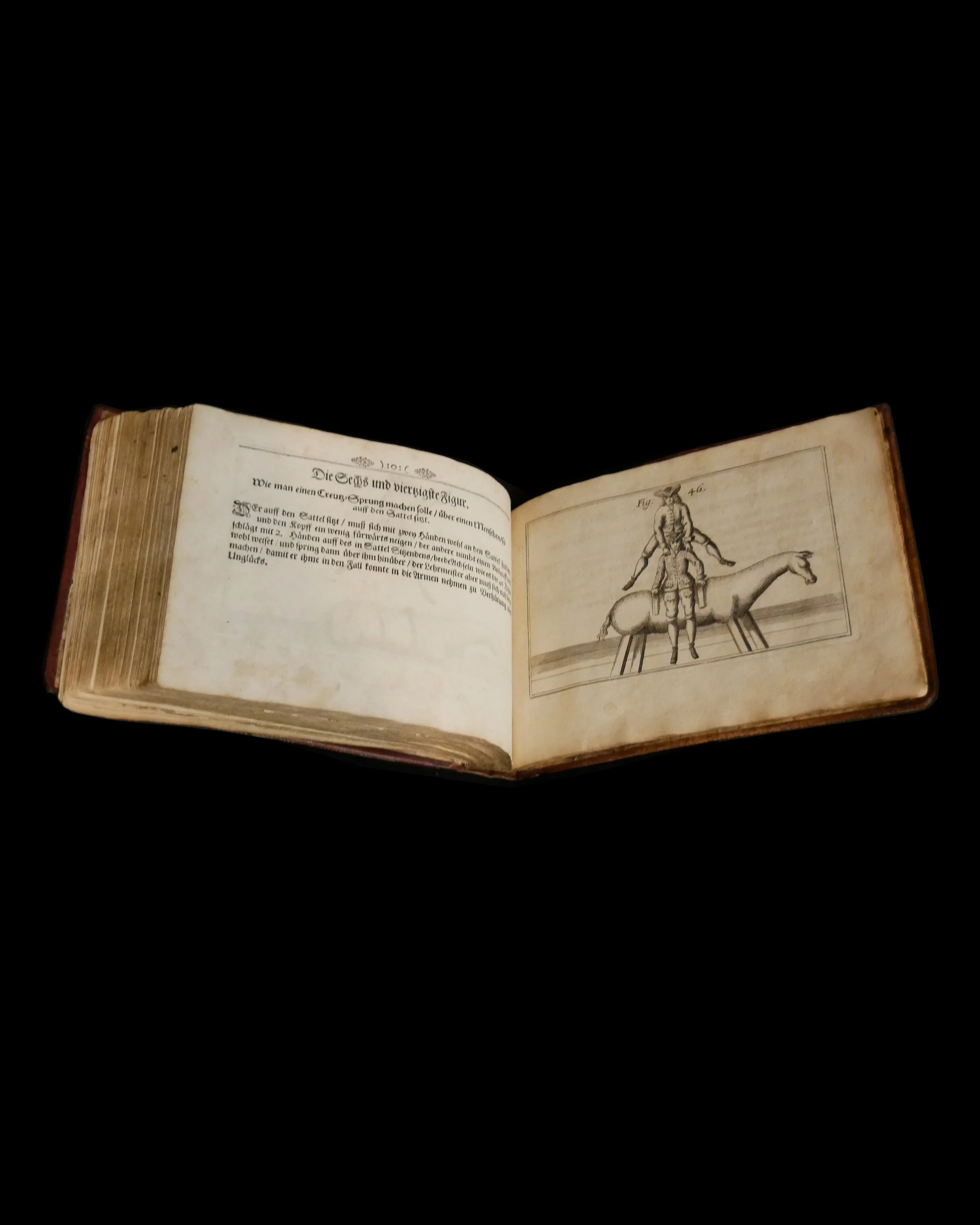 Image 13 of 17
Image 13 of 17

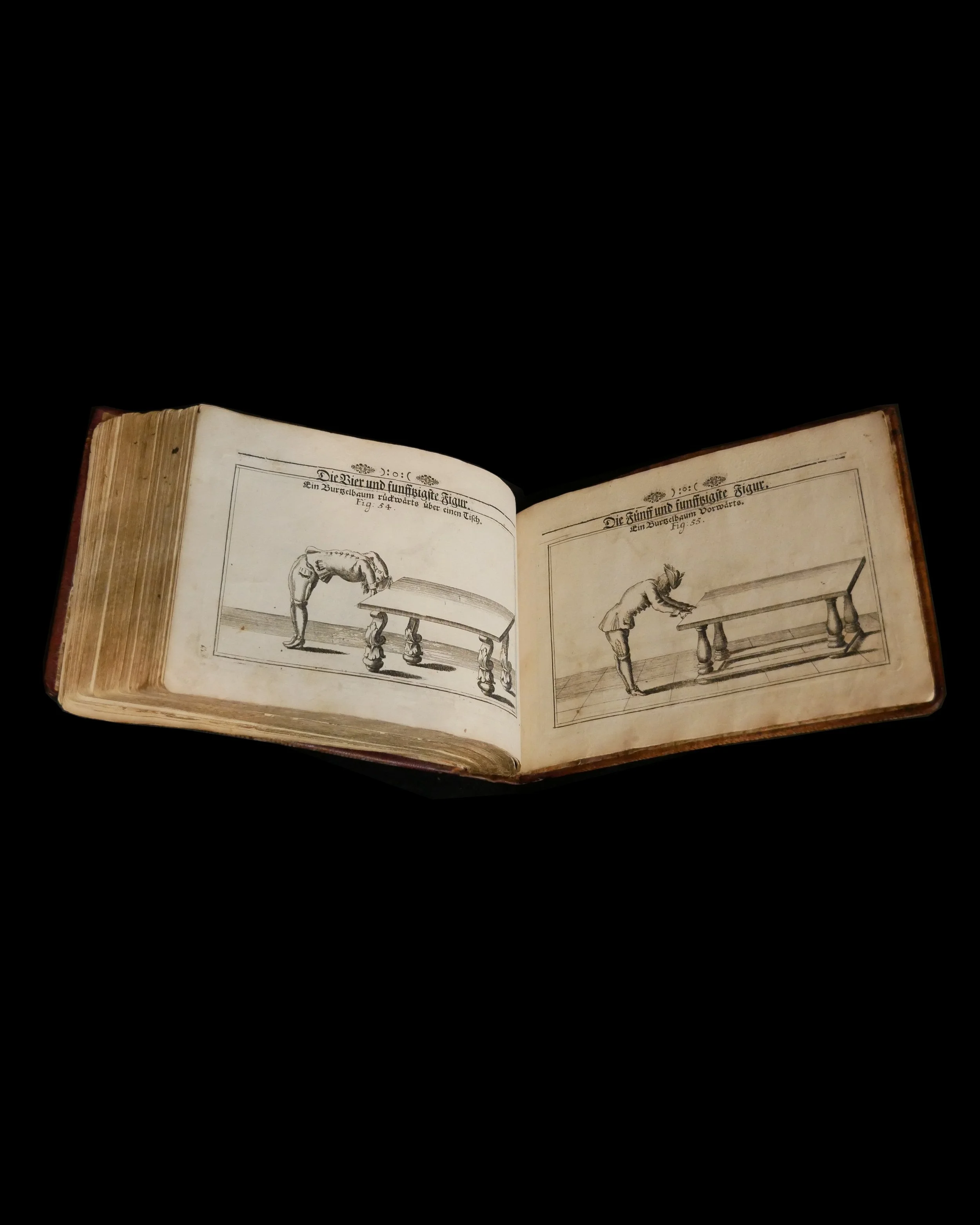 Image 14 of 17
Image 14 of 17

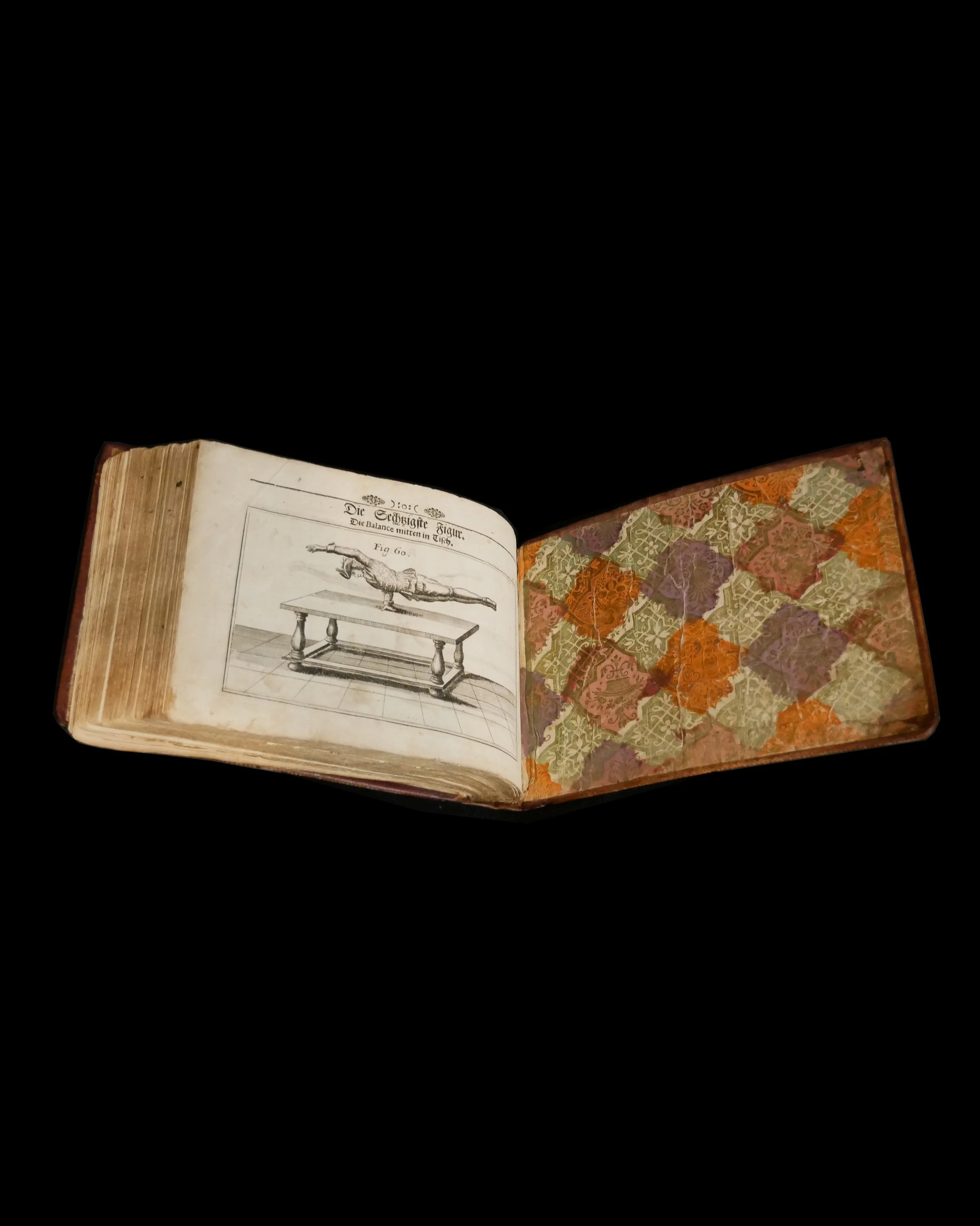 Image 15 of 17
Image 15 of 17

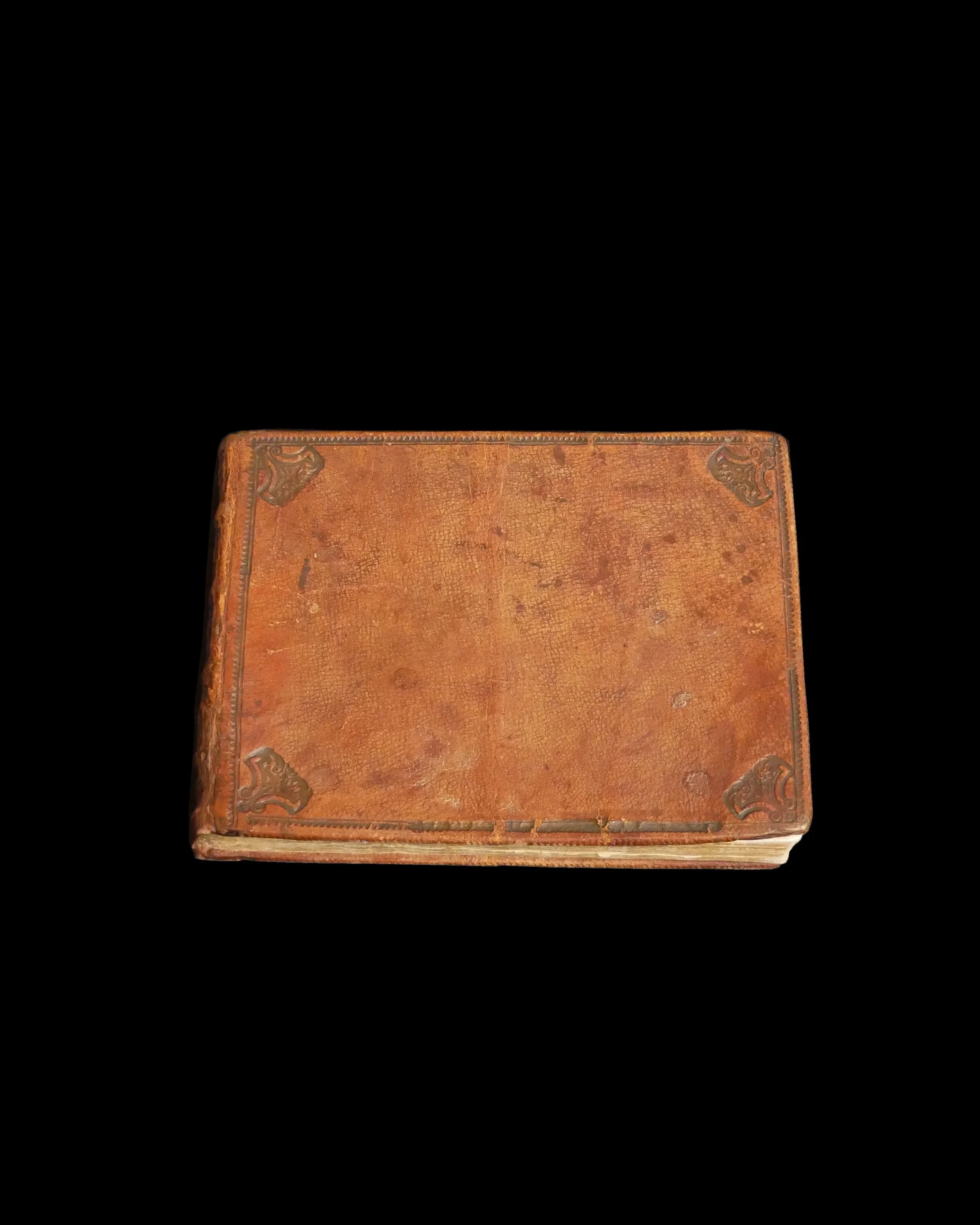 Image 16 of 17
Image 16 of 17

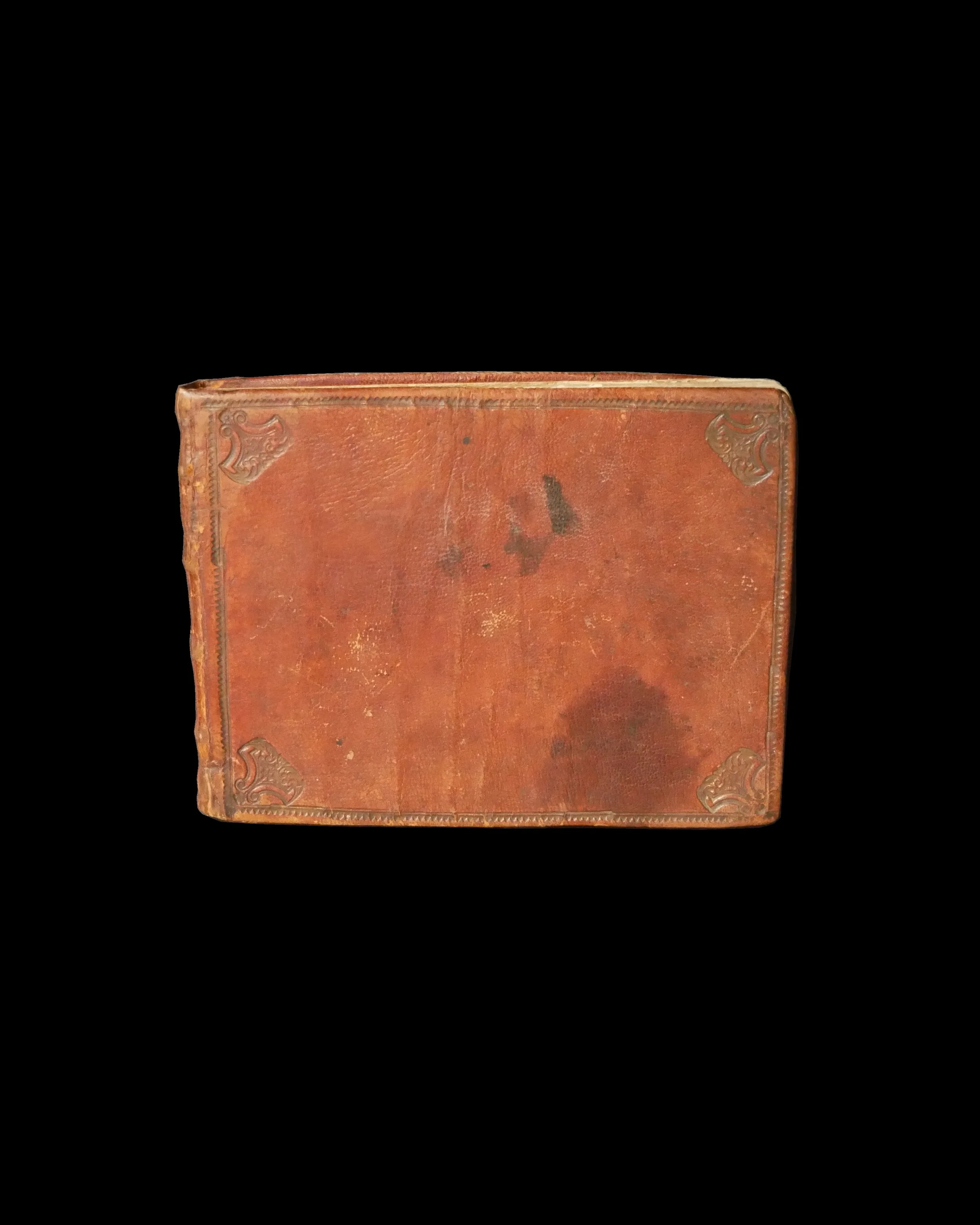 Image 17 of 17
Image 17 of 17


















Alexander Doyle’s “New, Fashionable, Knightly Art of Fencing and Defending.”
Two rare first editions bound together:
Alexander Doyle Neu alamodische ritterliche Fecht- und Schirm-Kunst. Das ist: Wahre und nach neuester Franzosischer Manier eingerichtete Unterweisung wie man sich in Fechten und Schirmen perfectioniren und verhalten solle. Nuremberg and Frankfort: Paul Lochnern, 1715. EXCEEDINGLY RARE: We trace no copies of the first edition of this work at auction. Pardoel 383; Thimms p.82
Bound with: Doyle. Kurtze und deutliche Auslegung der Voltagier-Kunst, sowol denen Meistern als Scholaren nutzlich... Nuremberg and Frankfurt: Paul Lochner, 1719. VERY RARE: We trace only one copy of this work at auction in 50 years. Not in Pardoel; not in Thimms.
Oblong 4to (152 x 204 mm). Title printed in red and black; 59 engraved plates (of 60, lacking portrait), 60 engraved plates in second book. (Some dampstaining, a few tears crossing plates and text with repairs.) Contemporary limp blind-tooled calf, top edge gilt, decorative paper pastedowns (spine repaired, some wear).
Alexander Doyle’s Neu Alamodische Ritterliche Fecht- und Schirm-Kunst, published in Nuremberg and Frankfurt in 1715, is a prime example demonstrating how internationally connected Europe was at that time. Written in German and published in Germany by Irish fencing master Alexander Doyle. Employed as fencing master at the court of Archbishop-Elector Lothar Franz von Schönborn, in Mainz. It describes a style of fencing that, its author asserts, is mainly French and Italian in nature. However, it includes some techniques and technical aspects that, at that time, are mainly found in German styles. This multinational nature of Doyle’s education, work, and life is further confirmed when he informs us in his 1720 Kurtze und Deutliche Auslegung der Voltagier- Kunst,2 that he learned vaulting “with great effort, deliberation, and diligence, in Italy, France, England, Ireland, and other places”
Doyle’s Fashionable Art of Fencing is not only one of the earliest German sources to describe fencing with the smallsword, providing important insights into the early evolution of smallsword fencing, particularly in Germany, but also contains the earliest known German description of the ligation used as a disarm, a technique that would become important within the German Kreußler lineage and its mythology.
Two rare first editions bound together:
Alexander Doyle Neu alamodische ritterliche Fecht- und Schirm-Kunst. Das ist: Wahre und nach neuester Franzosischer Manier eingerichtete Unterweisung wie man sich in Fechten und Schirmen perfectioniren und verhalten solle. Nuremberg and Frankfort: Paul Lochnern, 1715. EXCEEDINGLY RARE: We trace no copies of the first edition of this work at auction. Pardoel 383; Thimms p.82
Bound with: Doyle. Kurtze und deutliche Auslegung der Voltagier-Kunst, sowol denen Meistern als Scholaren nutzlich... Nuremberg and Frankfurt: Paul Lochner, 1719. VERY RARE: We trace only one copy of this work at auction in 50 years. Not in Pardoel; not in Thimms.
Oblong 4to (152 x 204 mm). Title printed in red and black; 59 engraved plates (of 60, lacking portrait), 60 engraved plates in second book. (Some dampstaining, a few tears crossing plates and text with repairs.) Contemporary limp blind-tooled calf, top edge gilt, decorative paper pastedowns (spine repaired, some wear).
Alexander Doyle’s Neu Alamodische Ritterliche Fecht- und Schirm-Kunst, published in Nuremberg and Frankfurt in 1715, is a prime example demonstrating how internationally connected Europe was at that time. Written in German and published in Germany by Irish fencing master Alexander Doyle. Employed as fencing master at the court of Archbishop-Elector Lothar Franz von Schönborn, in Mainz. It describes a style of fencing that, its author asserts, is mainly French and Italian in nature. However, it includes some techniques and technical aspects that, at that time, are mainly found in German styles. This multinational nature of Doyle’s education, work, and life is further confirmed when he informs us in his 1720 Kurtze und Deutliche Auslegung der Voltagier- Kunst,2 that he learned vaulting “with great effort, deliberation, and diligence, in Italy, France, England, Ireland, and other places”
Doyle’s Fashionable Art of Fencing is not only one of the earliest German sources to describe fencing with the smallsword, providing important insights into the early evolution of smallsword fencing, particularly in Germany, but also contains the earliest known German description of the ligation used as a disarm, a technique that would become important within the German Kreußler lineage and its mythology.
